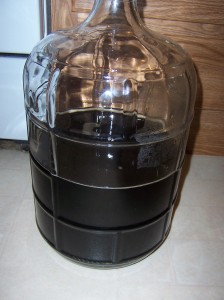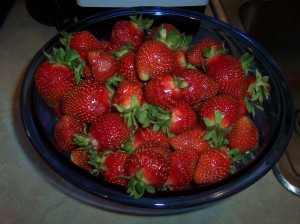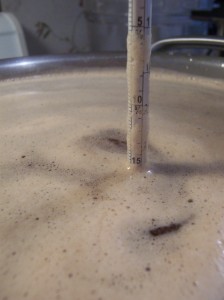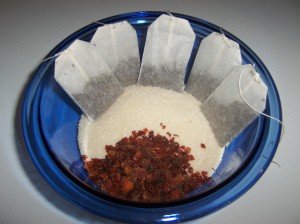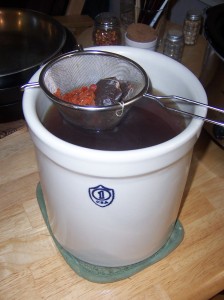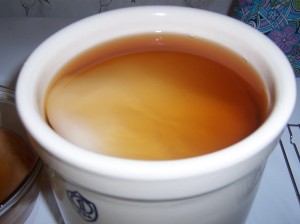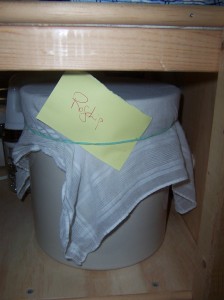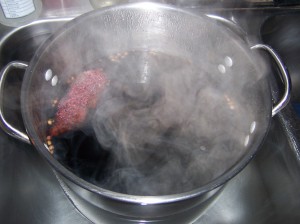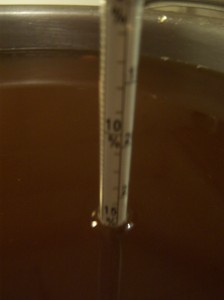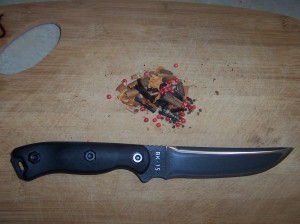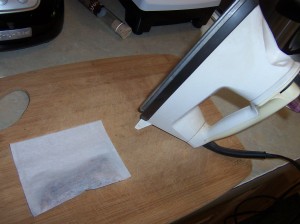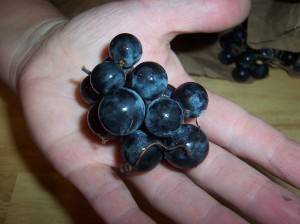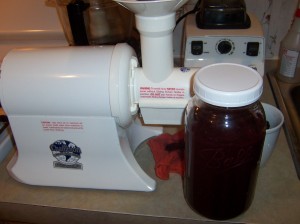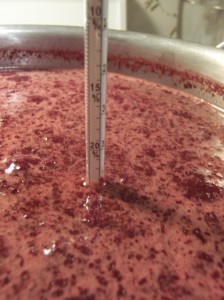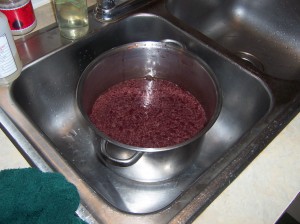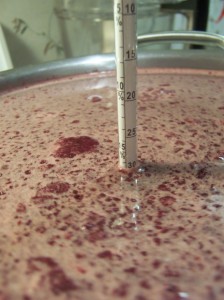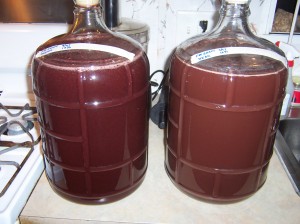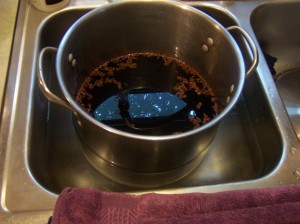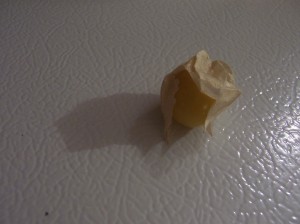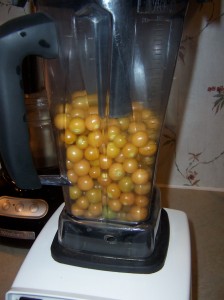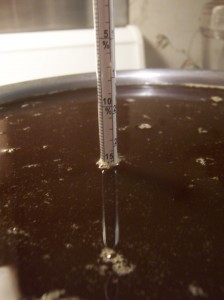For several years now, I’ve had my eye on doing a bochet, which is a mead made with cooked, caramelized honey. Note that this contradicts my meadmaking methodology for the most part — I am not an advocate of heating honey. There are too many wonderful things in honey that I don’t want to kill with heat, but the allure of the rich tones of flavor with a bochet was too much temptation. I had to try it.
Of course, I began with a chaga decoction in spring water that I let go for about 18 hours, tossing in a couple of staghorn sumac drupes for the final 15 minutes or so:

When the decoction was finished I strained it into an empty carboy, and cleaned out the stockpot for the process of cooking the honey.
Caramelizing the Honey
This is a tricky process. Honey, when it cooks, expands to nearly 3x its volume, so I had to make sure my 3 gallon stockpot had less than a gallon of honey inside. It is also essential to stir the honey constantly so it doesn’t burn. It’s a long process; I decided to cook the honey for about an hour. A small ordeal offering was in the works, during the cooking process a small amount of boiling honey splashed onto my hand and stuck to the skin, leaving a blister. Ah well; a gift for a gift.
I began with solid, crystalized honey, getting it into the pot to heat up and start melting:
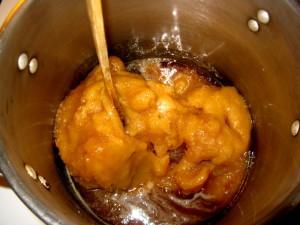
As the honey heated up under gentle heat with regular stirring, it would start to foam a bit at the top. Just keep stirring:
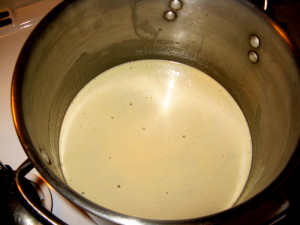
Once the honey hits its boiling point, things start to happen very quickly. This is where it is most important to keep stirring, so as not to scorch the sugars, and the honey expands 3x to fill the pot within a matter of a few seconds. Do NOT leave this unattended! You could have a huge mess on your hands.
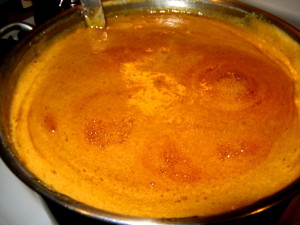
Once the honey is at this point, the real work begins. It’s important to CAREFULLY monitor the temperature of the flame and keep stirring. For an hour. Don’t let it stick or boil over. The sugars in the honey will begin to caramelize. Every 20 minutes, I took a sample of the honey:

It was interesting to follow the flavor development as the honey caramelized. In some ways, the first sample taken 20 minutes in had the most intense flavor; it seemed to mellow out and get richer as it aged, finally the bottom left, fully caramelized honey was wonderful.
At the end of an hour, I turned off the heat. The honey then contracts pretty quickly, within a few minutes. Very important — if you let it cool completely, you will end up with extremely thick honey many compare to roofing tar. Therefore it is important to add your liquid before you get to this stage. In my case I added the chaga/sumac tea, which was still warm. Adding hot water helps the mixture to not splash as much when you are adding the liquid:

I added 1 gallon of the warm tea (I’m saving the rest to finish off this batch, and to do another batch of plain traditional mead in the next day or two). Then, I VERY SLOWLY added some cool spring water, to get me up to close to 3 gallons.
Normally at this stage I would take a hydrometer reading to see where I am in terms of alcohol potential, but the mixture is still far too hot. Therefore, it went outside under the snow (with a lid on), and under the full moon behind the clouds. Within a couple of hours, it had cooled to blood temperature:

Finally I brought it back inside, adjusted the final levels to get me to an 18% initial alcohol potential, pitched the yeast, poured it into the carboy, and was left with this utter thing of deep brown loveliness:
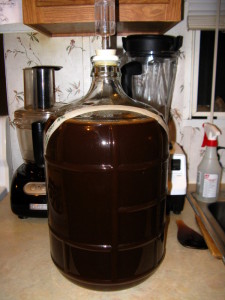
Needless to say, I’m extremely excited to see how this one comes out in a few months! Hail!


